Shortly after Florence Luebke died in 1985, her nephew decided to donate her collection of handkerchiefs to Colorado State University.
All 1,107 of them.
Now, the massive hanky collection has been put on display by the Avenir Museum of Design and Merchandising.
There are handkerchiefs of almost every conceivable type. Black ones for funerals. Festive ones for holidays, including Mother’s Day. Commemorative ones from states along Route 66. The one from Seattle World’s Fair of 1962. One with images of foods and their calorie counts? Got it. There’s even a placard outlining the hanky’s language of love – the many ways it was used for flirtation and communication by potential romantic partners.
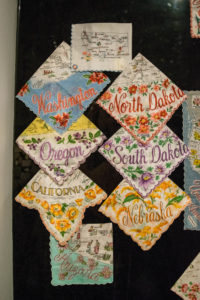 And they’re not all square – one display case showcases handkerchiefs of different shapes and sizes. Another shows off the ones Luebke received between 1947 and 1963 from the various “Hanky of the Month” clubs that were in existence at the time. (June 1948 was a banner month — she got nine of them.)
And they’re not all square – one display case showcases handkerchiefs of different shapes and sizes. Another shows off the ones Luebke received between 1947 and 1963 from the various “Hanky of the Month” clubs that were in existence at the time. (June 1948 was a banner month — she got nine of them.)
There’s also a section in the Avenir exhibit about how Kleenex got its start: After World War I, the hanky got a bad rap as a transfer mechanism for Spanish influenza virus, so the disposable tissue company seized on the opportunity in 1924 with the slogan, “Don’t put a cold in your pocket.”
Mystery solved
Unfortunately, when CSU employee Paul Gilbert dropped off the boxes and boxes of handkerchiefs in the mid-1980s, museum staff didn’t get his aunt’s last name. So Avenir employees and volunteers only knew her by how she was addressed in greeting cards that accompanied handkerchiefs she received as gifts – and that she kept as part of a meticulous hanky filing system.
“It’s a curator’s dream to have that archival evidence to go along with many of these pieces,” says Avenir Curator Katie Knowles. “But most of the cards referred to her as just ‘Flo.’”
Finally, Avenir volunteer Terrie Cornell found a single envelope bearing the last name “Luebke,” and verified her identity through some genealogical research.
The exhibition, “Nothing to Sneeze At: One Woman – 1,107 handkerchiefs,” was designed and developed by Avenir volunteer and guest curator Marcella Wells, and will be on display in the Avenir Gallery at the University Center for the Arts until Aug. 3. It is one of four new offerings that opened at the museum Jan. 16. The other three are on display in the Avenir Museum of Design and Merchandising at 216 E. Lake St.
 ‘ORANGE: A short history of orange in fashion’
‘ORANGE: A short history of orange in fashion’
This exploration of one the most important colors in the history of CSU – not to mention the Denver Broncos — features more than sports apparel.
A line of dresses illustrates how the use of the color orange in fashion changed over the span of a century, from the subdued burnt orange of the 1890s through the bright neons and fluorescents of the 1960s and ’70s.
Conceived by Avenir Museum volunteer Jan Alexander, who was struck by the large number of orange garments in the museum’s collection, the exhibition explores the various meanings of orange in society as well as the technological advances that were needed to develop brighter dyes and the synthetic fabrics that would hold them.
And, of course, one display features an Aggie letterman sweater, Denver Broncos apparel bearing “Orange Crush” and “United in Orange” mottos, as well as an old orange Bronco helmet from the ’60s loaned by John Beake, former general manager of the team.
The exhibition ends July 17.
‘FABRICation’
The first large-scale traveling exhibition brought in by the Avenir, Virginia Commonwealth University’s “FABRICation” is a textile and fiber arts examination of “slow making” by hand, featuring seven artists.
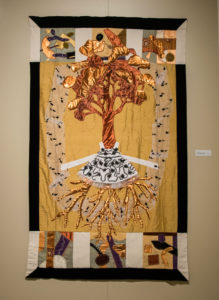 The theme is “Slow Looking,” suggesting that visitors take their time soaking in each piece to notice details that may not be evident at first glance.
The theme is “Slow Looking,” suggesting that visitors take their time soaking in each piece to notice details that may not be evident at first glance.
Many of the pieces feature mixed media. Erin Castellan uses a variety of materials to create hybrid works that drape off the wall. Kristy Deetz paints wood to look like a textile surface. Virginia Derryberry sews garments such as dresses onto quilts. Reni Gower’s work features colorful vertically hanging layers. Natalie Smith’s minimalist, multidimensional pieces explore repeating patterns on different surfaces. CSU alumna Susan Iverson created striking tapestries that hang in the shape of the letter U – and she’ll deliver an evening lecture about FABRICation at the Avenir on March 22 (see events at right). Finally, the largest of Rachel Hayes “strip-quilting” works features a combination of burlap sacks, polyester chiffon and vinyl. The exhibition is on display until May 11.
Evening Lecture Series
The Avenir will host four free public evening lectures this spring. They will all be held from 7 to 9 p.m. in the Avenir Museum Classroom, Room 157, at 216 E. Lake St. The galleries stay open from 5 to 7 p.m. on lecture evenings.
Feb. 15: Fashion FUNdamentals
Design and Merchandising faculty members Karen Hyllegard and Jennifer Ogle will discuss the unique Fashion FUNdamentals program they have developed for middle school girls, which offers both technical programming, to address real-world problems in the global fashion industry and cultivate interest in the STEM (science, technology, engineering and math) disciplines, and social programming, to address topics of concern among adolescent girls and to build self-worth. Program participants also gain an introduction to the world of historic apparel and textiles, as represented in the Avenir Museum collections. Several young graduates will talk about their new Fashion FUNdamentals skills.
March 22: FABRICation
Susan Iverson is professor emerita in the Department of Craft/Material Studies at Virginia Commonwealth University in Richmond, Virginia, and co-director of the American Tapestry Alliance. A weaver whose artistic work is included in FABRICation, Iverson will introduce guests to this exhibition of seven artists who incorporate a textile sensibility through elements of fabric and fabrication. The artists’ “slow making” – repetitive processes that invoke introspection and reflection – leads to appreciative “slow looking” on the part of viewers. Iverson will also offer a weaving demonstration during a different portion of her visit to CSU; please see the Avenir website in early February for specific details about date, time and location.
April 12: Embroidering Within Boundaries
Mary Littrell, former chair of the CSU Department of Design and Merchandising, will give a presentation about her travel to Afghanistan and co-authorship with Rangina Hamidi of the new book Embroidering within Boundaries: Afghan Women Creating a Future, published by Thrums Books. Littrell will describe her experiences traveling to Kandahar in 2015 to meet with women working in the embroidery collective called Kandahar Treasure, producing exquisite traditional khamak embroidery to realize an income and provide for their futures, within the safety of societal rules.
May 3: ORANGE, a short history of orange in fashion
Come hear how orange – the color of vitality and the unconventional – appeared in broad pendulum swings across 20th-century fashion, and learn the back stories of the bold apparel featured in the current exhibition. Why is “Aggie Orange” back in a big way?
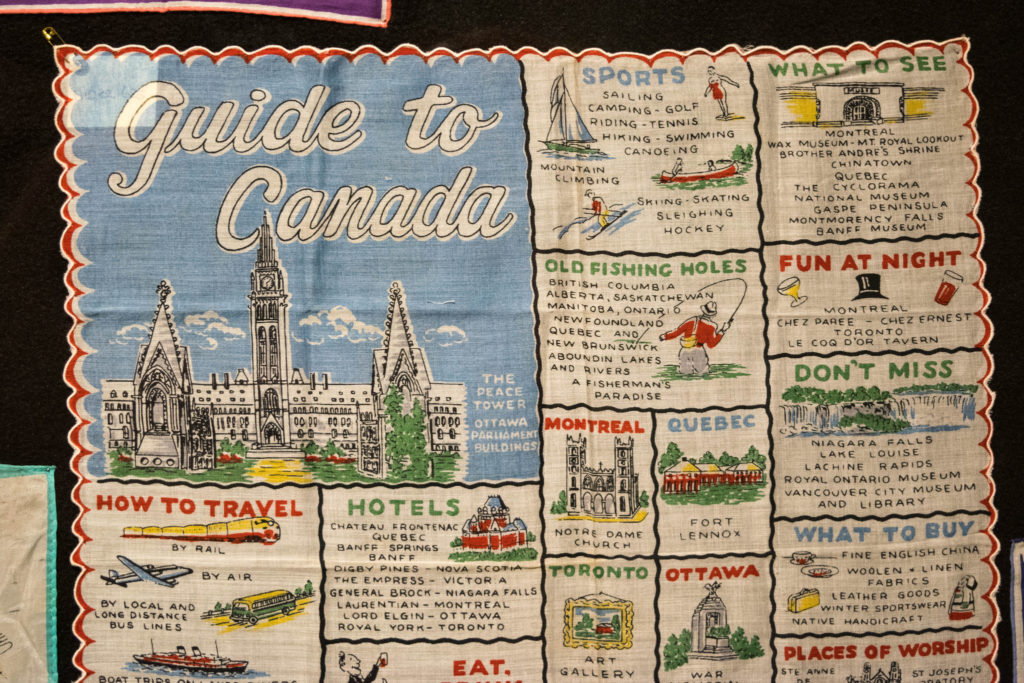
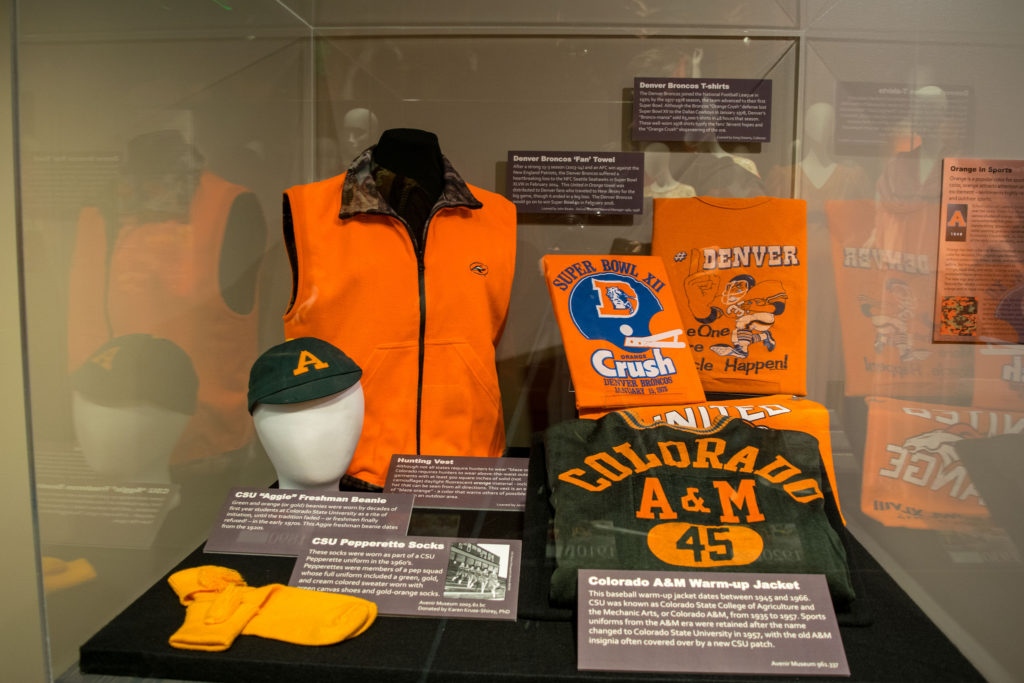



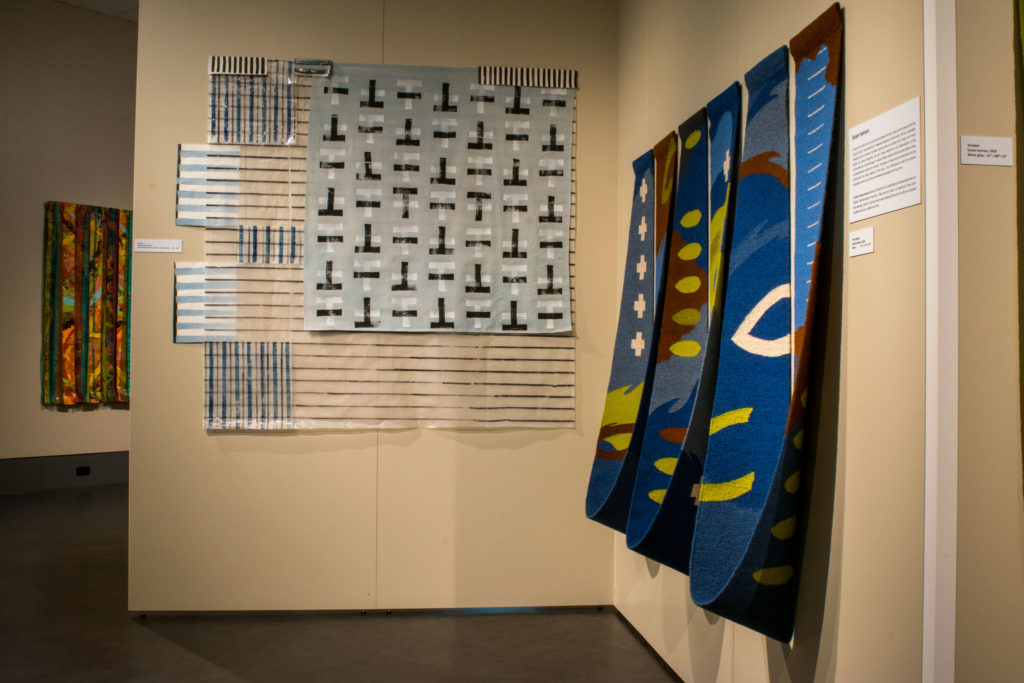


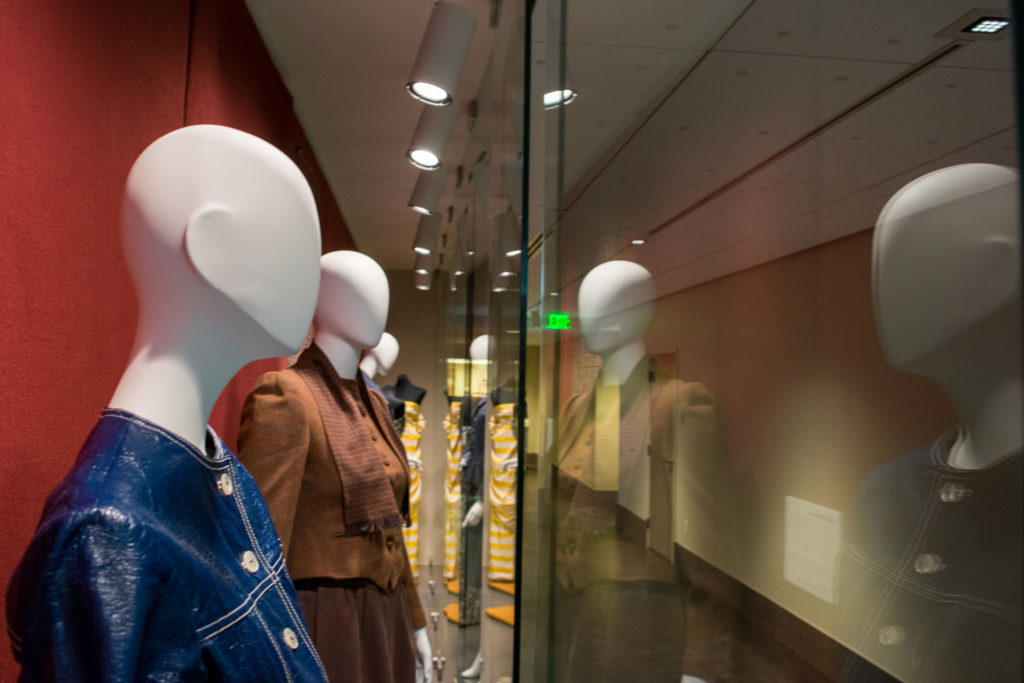
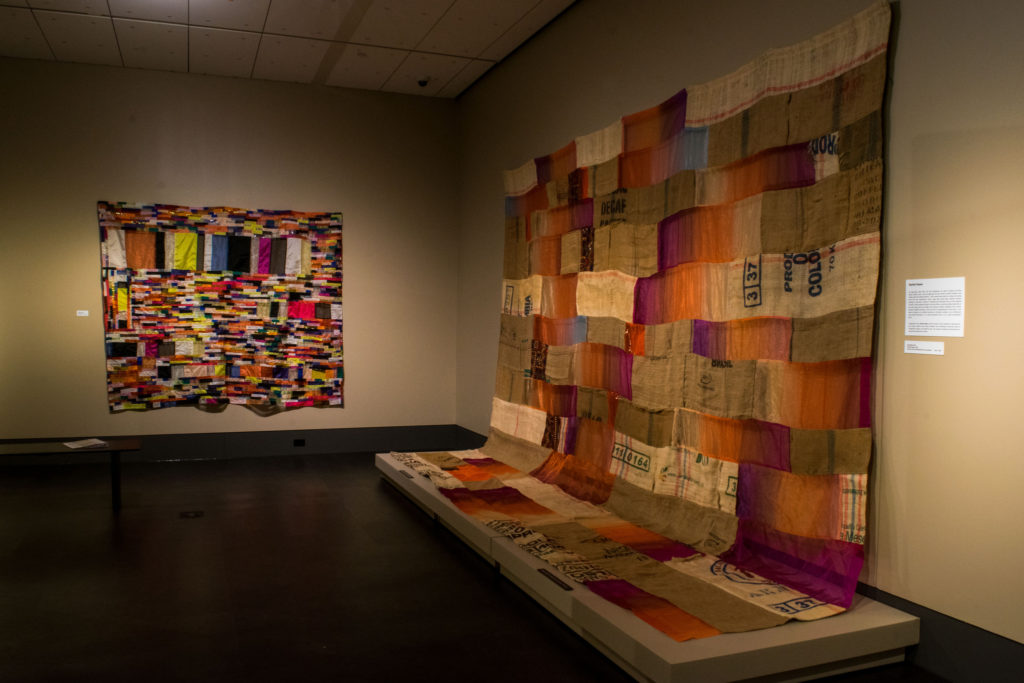
Photos by Christian Knoll
‘New Threads’
This ongoing exhibition of some of the Avenir’s most recent acquisitions features a variety of pieces, ranging from a woman’s wool dress made in the early 1900s to a Bhutanese ceremonial cloth.
There is a little black dress by couturier James Galanos; a suit by Adele Simpson, who designed high-end everyday wear for several U.S. First Ladies during the 20th century; and a woman’s blue suit from the 1940s. Two evening gowns on display were created by Denver designer Julia Tobias and were provided to the museum by a donor who found them in a secondhand clothing store. One of the gowns was created in 1959, according to a 1972 Denver Post article discovered by the Denver chapter of Fashion Group International. The Post interviewed Tobias as she was closing her atelier, and the gown appears in a photo accompanying the story.
The Avenir is based in the Department of Design and Merchandising, in CSU’s College of Health and Human Sciences.